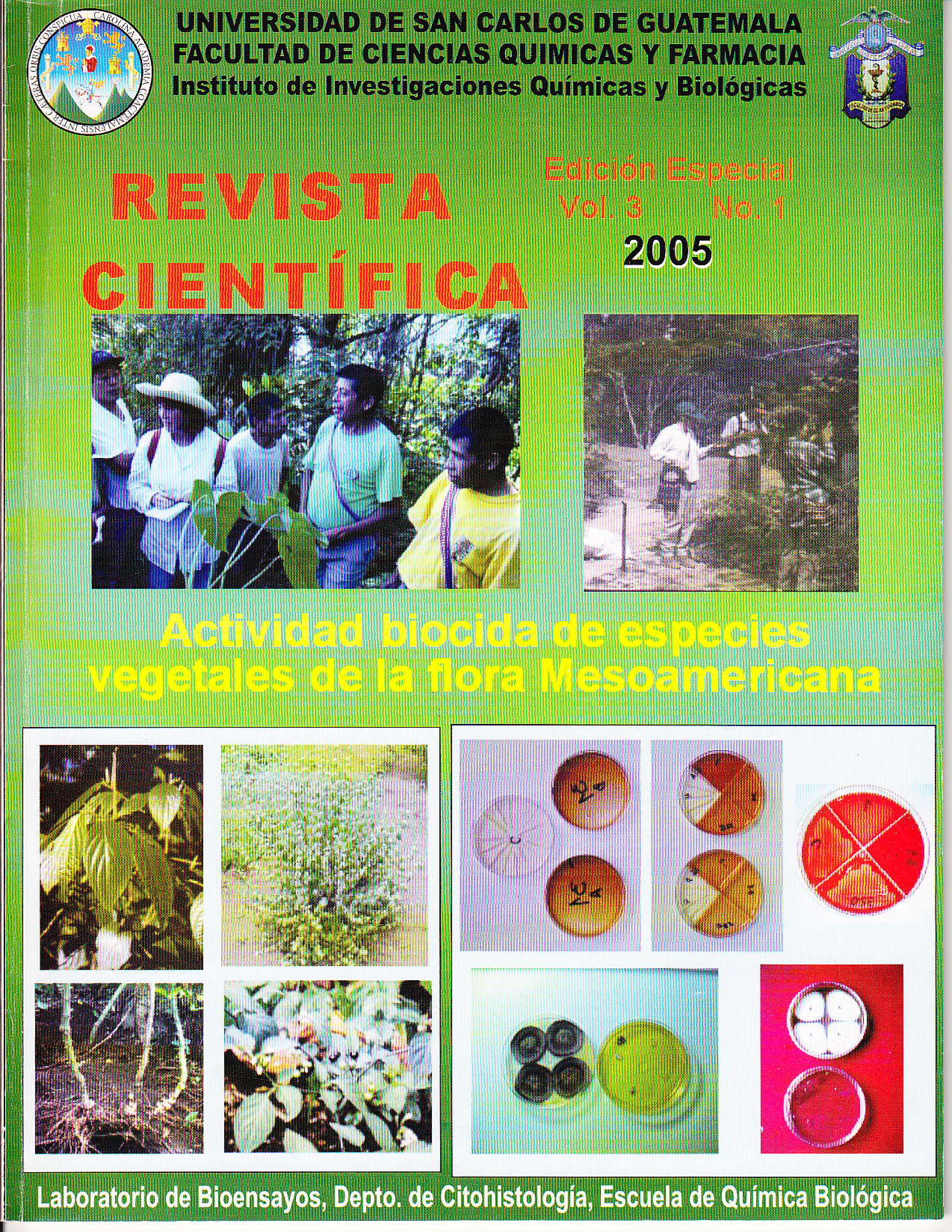Phytochemical Characterization of Extracts of Fronds and Rhizomes of Two Species of the Genus Phlebodium from Honduras and Guatemala
DOI:
https://doi.org/10.54495/Rev.Cientifica.EdicionEspecial2005.201%20Keywords:
Phytochemical characterization, Frondas, Rhizomes, Genus Phlebodium, Honduras, GuatemalaAbstract
The calahuala complex are species of the Polypodiaceae family. (Phlebodium pseudoaureum and P.decumanum') commonly used for the treatment of gastrointestinal, respiratory, cardiac, renal conditions, rheumatism, diabetes, hypertension, topically used in psoriasis, eczema, ulcers and as a sunscreen. Pharmacological tests have shown anti-inflammatory and immunomodulatory activity. photoprotective, and stimulator of brain activity. In the present work, the eromatographic profile of extracts of fronds and rhizomes of P. decumanum and P. pseudoaureum was compared by means of thin layer chromatography (TLC) and high resolution liquid chromatography (HPLC) with the objective of determining phytochemical differences between the species. and propose some molecules that could be used to standardize their extracts. According to the results obtained in HPLC, it was determined that the extracts of fronds and rhizomes of P. decumanum and P. pseudoauruem present significant phytochemical differences, showing a greater amount of metabolites in the fronds, in which chlorogenic acid was identified in P. decumanum and caffeic acid in P. pseudoauruem. By TLC they are evidenced as metabolites
characteristic, the presence of flavonoids in the fronds and saponins in the rhizomes.
Downloads
References
Moran. R. 1 996. Polypodiaccac. En : Davidsc, G . et al. ( Eds.) Flora Mesoamericana. Vol 5. Universidad Nacional Autónoma de México, Missouri Botanical Garden y The Natural History Museum. México, p. 130-133.
Cáceres, A. 1996. Plantas de Uso Medicinal en Guatemala. Ed. Universitaria. Guatemala, po. 287-289.
PLANTER. 1989. Obtención y Aprovechamiento de Extractos Vegetales de la Flora Salvadoreña. San Salvador, Universidad de El Salvador, 468 p.
Manna, S.K. et al.2003. Calagualine inhibits nuclear transcription factors-kB activated by various inflammatory and tumor promoting agents. Cancer Letters. (190) 171-182, https://doi.org/10.1016/S0304-3835(02)00618-3
Punzón, C. et al. 2003. In vitro anti-inflammatory activity of Phlebodium decumanum. Modulation of tumor necrosis factor and soluble T N F receptors. Internal. Immimopharmacol.3: 1293-1299, https://doi.org/10.1016/S1567-5769(03)00117-6
Alonso Lebrero. J .L. et al. 2003. Ph oto protective properties of a hydrophilic extract of the fern Polypodium leucotomos on human skin cells. J. Photochem. Photobiol. B: Biology (70) 31-37, https://doi.org/10.1016/S1011-1344(03)00051-4
Anton. A. et al. 1992. Effects of anapsos on behaviour and brain cytokines in rats. Ann. Psychiat. 3:329-341.
Alcaraz, M.V. et al. 1999. An extract of Polypodium leucotomos appears to minimize certain photoaging changes in a hairless albino mouse animal model. A pilot study Photodermatol, Photoimmunol. & Photomed. 15(3-4). 120-6, https://doi.org/10.1111/j.1600-0781.1999.tb00071.x
Gomez, A.J. et al., 2001. The antioxidant action of Polypodium leucotomos extract and kojic acid: reactions with reactive oxygen species. Bru:. J. Med. Biol. Res. 34: 1487-1494, https://doi.org/10.1590/S0100-879X2001001100018
Horvath. A. et al. 1975. Triterpenes from rhizomes of Polypodium leucotomos. Phyiochemicai reports. Phytochem. 14: 1641-1642, https://doi.org/10.1016/0031-9422(75)85368-4
Lui. B. et al. 1998. Quantitative determination of anti-inflammatory principles in some Polypodium species as a basis for standardization. Phytomed. 5:187-194, https://doi.org/10.1016/S0944-7113(98)80026-3
Sempere-Ortells, J.M. et al. 2002. Anapsos (Poly-podimn leucotomos) modulates lymphoid cells and the expresión of adhesión molecules. Pharmacol. Res. 46 (2): 185-190, https://doi.org/10.1016/S1043-6618(02)00091-9
Tuominen. M. er al. 1991 . Enchancing effect of calaguala on the prevention of rejection on skin transplants in mice. Phytothe. Res. 5:234-236, https://doi.org/10.1002/ptr.2650050510
Tuominen. M. et al. 1992. Effects of Calaguala and an Active Principle, Adenosine, on Platelet Activating Factor. Planta Med. 58:307-310, https://doi.org/10.1055/s-2006-961472
Vasagne, M. el al. 1997. The flavonoid constituents of Polypodium species (Calaguala) and their effect on the elastase release in human neutrophils. Planta Med. 63: 511-517, https://doi.org/10.1055/s-2006-957753
Downloads
Published
How to Cite
Issue
Section
License
Copyright (c) 2005 Sully M. Cruz, Nilka de Solis, Pablo N. Solis, Mahabir P. Gupta, Armando Cáceres

This work is licensed under a Creative Commons Attribution 4.0 International License.
Authors who publish with this journal agree to the following terms:
- Authors retain copyright and grant the journal right of first publication with the work simultaneously licensed under a Creative Commons Attribution License 4.0 that allows others to share the work with an acknowledgement of the work's authorship and initial publication in this journal.
- Authors are able to enter into separate, additional contractual arrangements for the non-exclusive distribution of the journal's published version of the work (e.g., post it to an institutional repository or publish it in a book), with an acknowledgement of its initial publication in this journal.
- Authors are permitted and encouraged to post their work online (e.g., in institutional repositories or on their website) prior to and during the submission process, as it can lead to productive exchanges, as well as earlier and greater citation of published work.









